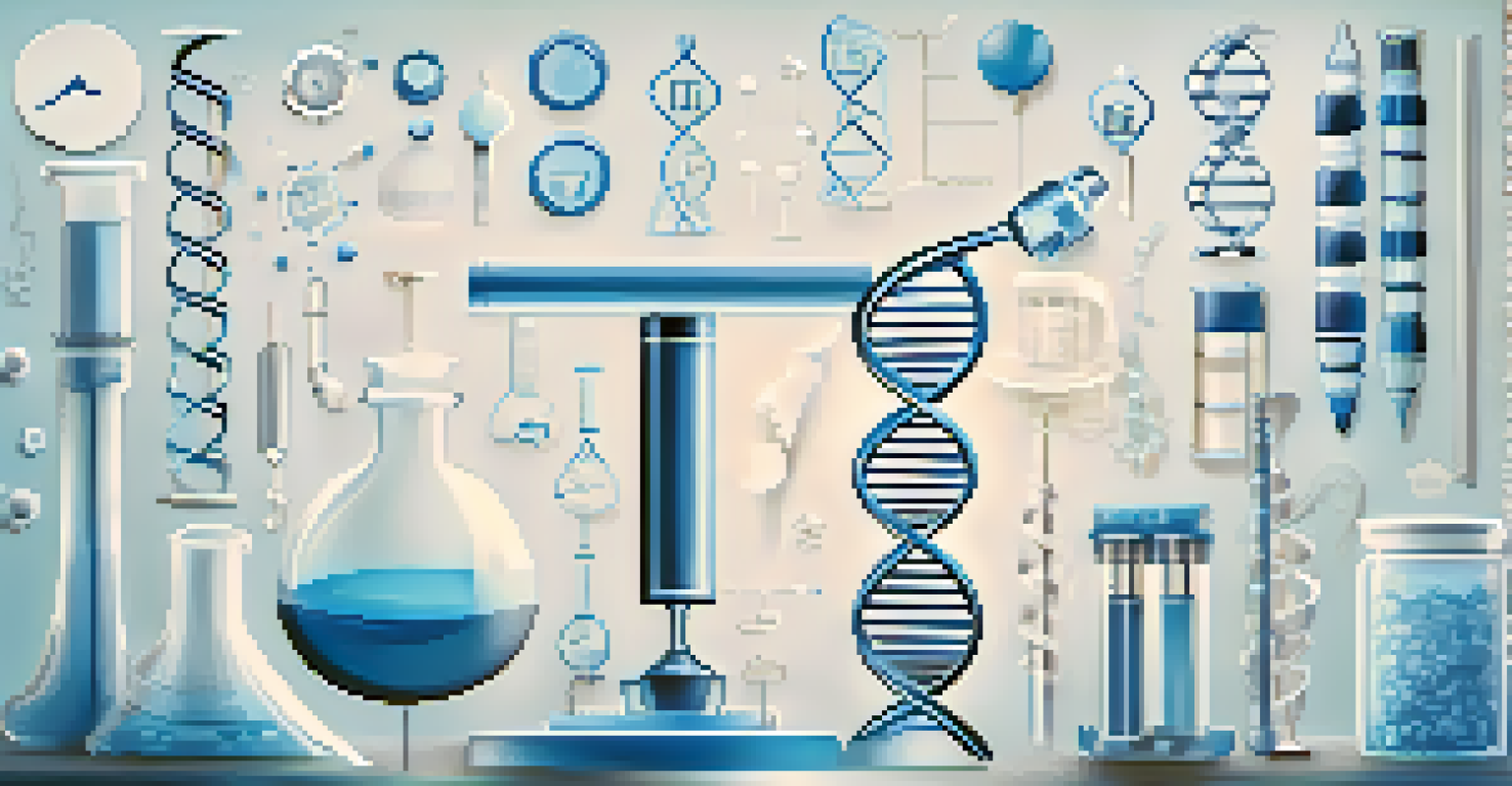Genetic Predispositions to Hallucinogen Addiction

What Are Hallucinogens and Their Effects?
Hallucinogens are a class of drugs that alter perception, mood, and cognitive processes. Common examples include LSD, psilocybin (magic mushrooms), and mescaline. These substances can lead to profound changes in how individuals experience reality, often resulting in vivid visual and auditory hallucinations.
Addiction is a complex interplay of biological, psychological, and social factors.
While some seek out hallucinogens for their potential therapeutic benefits, such as in treating PTSD or depression, they can also lead to harmful consequences. For some users, the experience may trigger psychological distress or exacerbate underlying mental health conditions. Understanding these effects is crucial, particularly when considering the potential for addiction.
The relationship between hallucinogens and addiction is complex. Unlike substances like alcohol or opioids, hallucinogens are not typically associated with physical dependency. However, psychological dependency can develop, which is where genetic predispositions come into play.
The Role of Genetics in Addiction
Genetics plays a significant role in determining an individual's susceptibility to various addictions, including hallucinogens. Research indicates that certain genes may influence how a person's brain responds to drugs, affecting both the pleasure derived from the substance and the likelihood of developing an addiction.

For example, variations in genes related to dopamine regulation can impact how reward pathways in the brain function. This means that individuals with certain genetic markers might experience a heightened sense of euphoria or altered perception when using hallucinogens, making them more inclined to use these substances repeatedly.
Genetics Influence Addiction Risk
Genetic predispositions play a significant role in an individual's susceptibility to hallucinogen addiction, impacting how their brain responds to these substances.
Moreover, familial patterns often emerge, where individuals with a family history of addiction exhibit a greater risk. This suggests that genetics does not act alone; environmental factors and personal experiences also play crucial roles in the development of hallucinogen addiction.
Identifying Genetic Predispositions
Identifying genetic predispositions to hallucinogen addiction involves studying specific biomarkers and genetic variations. Scientists use techniques such as genome-wide association studies (GWAS) to pinpoint genes that may be associated with addictive behaviors. These studies have revealed several candidate genes linked to neurotransmitter systems, particularly those involving serotonin and dopamine.
The greatest discovery of my generation is that a human being can alter his life by altering his attitude.
One notable example is the serotonin transporter gene (5-HTTLPR), which has been implicated in mood regulation and response to hallucinogens. Variations in this gene may influence how individuals process emotional experiences, potentially affecting their likelihood of developing an addiction.
Understanding these genetic markers can lead to more personalized approaches in treatment and prevention strategies. By recognizing those at higher risk, healthcare providers can tailor interventions more effectively, potentially reducing the prevalence of hallucinogen addiction in vulnerable populations.
The Interaction of Genetics and Environment
While genetics plays a key role in addiction, it doesn't operate in a vacuum. Environmental factors, such as social influences, mental health status, and trauma history, significantly interact with genetic predispositions. For instance, an individual with a genetic susceptibility to addiction may never develop a problem if they are in a supportive environment.
Conversely, a person without a genetic predisposition may still become addicted due to adverse life circumstances, such as stress or exposure to substance-using peers. This interplay highlights the importance of considering both genetic and environmental factors when assessing the risk for hallucinogen addiction.
Environment Interacts with Genetics
The interplay between genetic factors and environmental influences, such as social support and personal experiences, is crucial in determining addiction outcomes.
Research underscores the necessity for holistic approaches that address both aspects. By combining genetic insights with environmental context, we can better understand addiction's complexities and develop more effective prevention strategies.
Potential for Treatment and Prevention
Recognizing genetic predispositions to hallucinogen addiction opens up new avenues for treatment and prevention. For example, individuals identified as at risk might benefit from early interventions, such as counseling or education about the effects of hallucinogens. This proactive approach can empower individuals with knowledge and coping strategies before they experiment with these substances.
Moreover, personalized medicine is becoming a reality in addiction treatment. Genetic testing may guide healthcare providers in selecting the most effective therapeutic options, minimizing the risk of addiction for those with a predisposition. This tailored approach ensures that treatment plans align with an individual’s unique genetic makeup.
Prevention programs that incorporate genetic education can also demystify addiction. By helping individuals understand their potential vulnerabilities, we can foster a more informed and proactive approach to substance use.
The Future of Research on Addiction Genetics
The study of genetics in relation to hallucinogen addiction is still evolving, with ongoing research aimed at uncovering more about the underlying mechanisms. Future studies may focus on the interactions between multiple genes and how they collectively influence addiction risk. This could provide deeper insights into the biological basis of addiction and pave the way for innovative treatments.
Additionally, as technology advances, researchers are exploring the role of epigenetics—how environmental factors can affect gene expression without altering the DNA sequence itself. This could reveal how experiences and lifestyle choices influence addiction risk, further complicating the genetic landscape of hallucinogen use.
Future Research on Addiction Genetics
Ongoing research aims to uncover the complex interactions between multiple genes and environmental factors, which could inform more effective treatment and prevention strategies for hallucinogen addiction.
Investing in this research is crucial, as it holds the potential to inform public health strategies and improve outcomes for individuals struggling with addiction. A deeper understanding of the genetic factors involved will be instrumental in shaping future interventions.
Final Thoughts on Hallucinogen Addiction and Genetics
In conclusion, the relationship between genetic predispositions and hallucinogen addiction is a multifaceted one. While genetics can influence an individual's risk, it is essential to remember that addiction is a complex interplay of biological, psychological, and social factors. As we deepen our understanding, we can better address the challenges associated with hallucinogen use and addiction.
Awareness and education about genetic risks can empower individuals to make informed choices regarding drug use. Furthermore, support systems and preventive measures can help mitigate these risks, creating healthier communities.

Ultimately, fostering open conversations about addiction and its genetic components can lead to greater understanding and compassion, paving the way for more effective treatment and support for those affected by hallucinogen addiction.